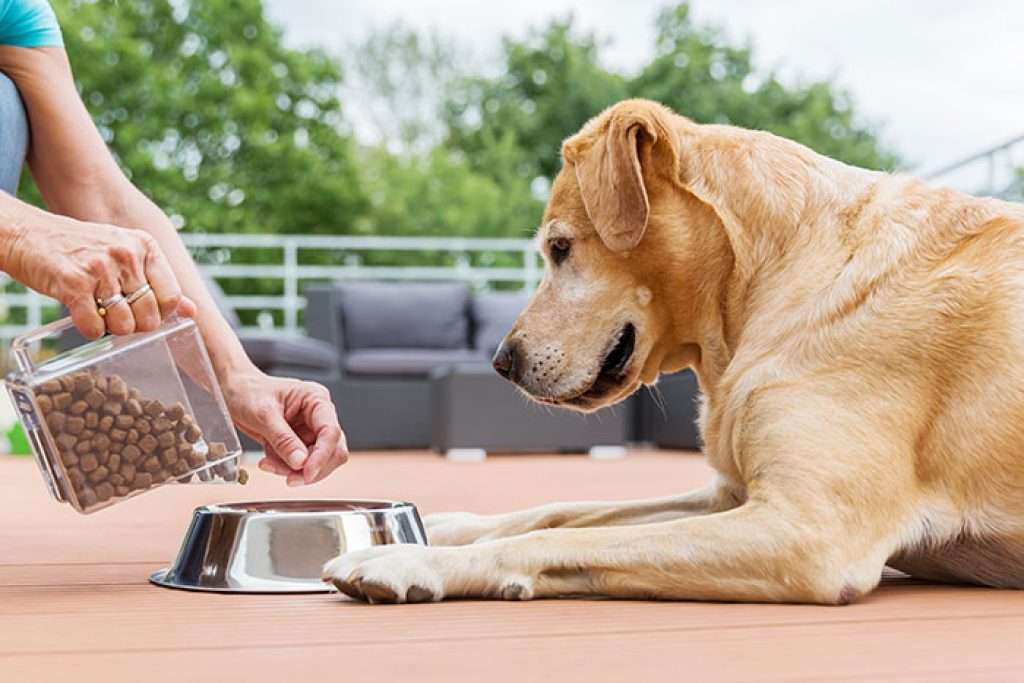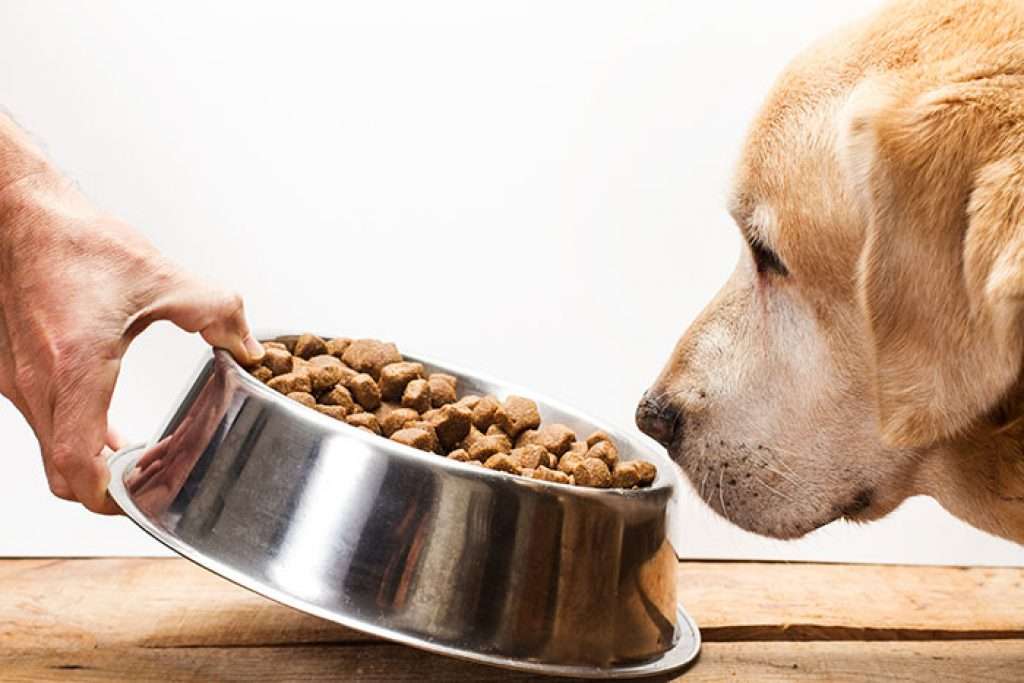1. “Dry Food is more filling for the Dog”
This statement is true. Dry food does fill the stomach. However, at the same time, it should be considered what it fills the stomach with. Ultimately, the dry food fills the dog with numerous nutrients that are of no help to the body of a carnivore and for the most part cannot even be utilised.
The theory says that dry food saturates significantly better than wet food or raw meat. Above all, it has longer chewing pleasure creating a faster feeling of saturation. Also, the heavy digestion of grains and carbohydrates in the dog’s body creates a longer sense of fullness. This can be seen as an advantage, especially with regards to overweight dogs.

2. “Dry Food ensures good teeth”
Both traders and veterinarians keep claiming that the hard dry food briquettes have an abrasive effect on the teeth. However, if you look at the construction of a dog’s dentures, you can soon realise that even the hardest bones can be broken and chewed with their teeth. So, ultimately, pressed dried food seems an easy breezy biscuit in comparison.
Accordingly, the abrasion effect of dry food is surprisingly low. The contained sugar in the form of carbohydrates and cereals creates the ideal habitat for bacteria, which in turn make for extremely unpleasant odours (bad breath), inflammation of the gums and the formation of pockets and tartar.
If you pay attention to good dental hygiene of your dog, you should rather offer fresh bones. Fresh bones can result in a more positive and effective abrasion effect for the dog compared to that of dry food.
3. “Dry Food is cheaper”
Of course, dry food is much cheaper than wet food or the feeding of raw meat. Primarily, this is due to the much cheaper ingredients used during production. However, with the lack of digestible ingredients and associated deficiencies, in the long run dry food is significantly more expensive than wet food or BARF.
When comparing the cost of dog food alternatives, it is vitally important to compare the quality of the ingredients as this can impact on the veterinarian costs associated with your dog food choice.
In addition, the dog must eat significantly larger amounts of dry food in an attempt to get nutritional value from the food. However, eating larger amounts is prevented due to the swelling effect of the grain in the stomach. Also, the animal is not really full, only the organs are filled.

4. “Dogs eat smaller portions of Dry Food”
This is of course correct. With the swelling effect of dry food in the stomach, the dog can consume significantly smaller portions of dry food. However, at the same time, it should be taken into account that hardly any meaningful ingredients are present in the quantities consumed. This creates a shortage of nutrients for the animal in the long term. Thus, while the owner benefits financially from the smaller portions, the dog will suffer in the long run by the malnutrition serious damage.
5. “Dry Food is longer lasting and easier to store compared to Wet Food”
The longer shelf life and easy storage of dry food is of course an advantage that is difficult to disagree with. However, ultimately, what does a long shelf life bring for the dog if the nutritional value is poor?
Another point to consider is that with a long shelf life and easy storing capacity, it also increases the risk of infestation with mould. Also, the mites contained in the dry food could spread throughout the bag or in the worst case scenario to human food which could have a detrimental effect.
6. “My Dog drinks enough”
This is probably the biggest misconception in the field of dry food. The rule of thumb is that an average dog with a normal energy level per day should drink around 100 ml of fluid per kilogram of body weight.
However, if the dog eats dry food, the demand increases approximately fourfold to prevent the withdrawal of water from the body of the animal. For example, a 15kg dog would have to drink about 6 litres of water per day to get the required amount, which is of course completely unrealistic.

7. “My Dog doesn’t like Wet Food”
If you have fed dry food for a long time, the transition to wet food is usually very difficult. This is primarily due to the lack of sensory attractants, which are not present in high-quality wet food. Sensory attractants make the four-legged friend formally dependent and addicted to the added additives of the dry food, creating a lack of desire for any other food interests. However, this has nothing to do with the fact that the dog appreciates the food, they are only conditioned to it. Nevertheless, there are some tricks and small steps which can be taken so that the dog can get used to the dog high-quality wet food or BARF. Firstly, mix in the previous dry food with small amounts of wet food and increase it steadily until the dog also accepts the consumption of wet food. Also, pre-soaking the dry food in water can help.8. “I don’t want my Dog to Starve!”
Many people have the opinion that their dog is hungry during the day and permanently needs dry food. However, if you consider the conditions in the wilderness, the wolf doesn’t always have a prey animal at their disposal. Also, the fact that a dog can live without food for 2-3 weeks at a time confirms that a dog will not “starve” during the day. It is completely superfluous to provide food to the dog throughout the day. Similar to humans, regular meals once or twice a day are more than sufficient.9. “Many Dogs grow old despite being fed Dry Food”
Of course, dry food is not a mortal rate criterion. Many animals can become very old despite feeding on dry food. But who knows, maybe they would have become much older with high quality wet food? As with us humans smoking or the consumption of junk food does not necessarily lead to a rapid death, neither does dry fodder in dogs. But would you really like to take the risk? Studies have proven that healthy-nourished dogs have an average longer life span of three years.
10. “Dry Food helps against Diarrhoea”
Another common argument is that dry food is the ideal helper against diarrhoea. This statement is correct. However, diarrhoea can only develop if there is enough fluid in the body to soften the faeces. As dry food extracts more liquid than is added, the animals faeces cannot soften. Nevertheless, the use of dry food is absolutely no miracle cure for diarrhoea.
Feeding dry food does not prevent symptoms, nor does it not fight the source of diarrhoea. The dry consistency of dry food only adds to the extra dehydration of the body.






